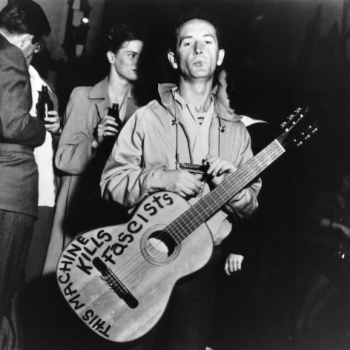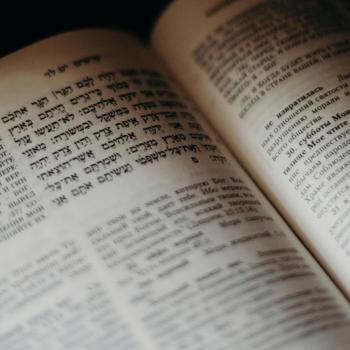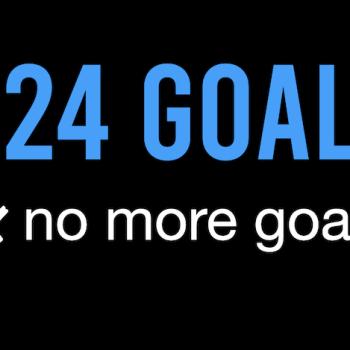 Last night Kristin and I went to The Hope Center banquet to support Chris and Tammy Jehle. Chris has been quite an inspiration to me. I’m not sure I know of another human being that I admire more than I admire him. One of the books I’ve read which has put the pedal to the metal in terms of my desire to stop perpetuating systems of injustice is Divided by faith. Here is my quick review of the material in this great book. This one’s for Jehle…
Last night Kristin and I went to The Hope Center banquet to support Chris and Tammy Jehle. Chris has been quite an inspiration to me. I’m not sure I know of another human being that I admire more than I admire him. One of the books I’ve read which has put the pedal to the metal in terms of my desire to stop perpetuating systems of injustice is Divided by faith. Here is my quick review of the material in this great book. This one’s for Jehle…
Divided By Faith:
Evangelical Religion and the Problem of Race in America
by Michael Emerson & Christian Smith
In their book Divided by Faith[1] authors Michael Emerson and Christian Smith argue that although evangelical Christians really want to do something about racism their actions actually perpetuate racism. They use the term “racialized society,” to reflect the reality that race matters even though this might not necessarily entail prejudice or racism. Racialized societies are ones where races are separate, not necessarily equal, and where intimate associations are made on the basis of race such that “we are never unaware of the race of the person with whom we interact.”[2]
We may think racism is in decline, but in truth the form which racism takes changes over time. If we don’t change the questions we ask in order to assess for racism, then it will give this false appearance. The authors argue that the ways in which we assess race relations “remain stuck in the Jim Crow era, leading us to mistaken conclusions – racism is on the wane.”[3] Their findings suggest that Racism is not in decline but that it continually changes its form. They believe racism in America is: 1) increasingly covert, 2) imbedded in normal operations of institutions, 3) avoiding racial terminology, perhaps most importantly 4) invisible to most whites. They define racism as “the collective misuse of power that results in diminished life opportunities for some racial groups.”[4]
The authors make the point that although educated whites would profess to be less racialized when asked they are actually more racialized when one considers where they actually live. For instance, most whites would agree forced residential segregation is wrong, most would accept residential segregation by choice, even though the results are the same either way. “Choice and freedom are two of the dominant American values that today maintain the racialized society.”[5] A simple look at black-white intermarriage rates shows that the divide between the two races is large. A look at residential patterns and medium income rates shows the divide is also hierarchical.[6] For instance, the median net worth of blacks is just 8% of that of whites – 3,700 dollars compared to 43,800 dollars – and the median net financial assets, shockingly, is 0 percent that of whites – zero dollars compared to 7,000 dollars.”[7] This is drastic inequality.
Despite the fact that Christianity provides the moral force for change in American race relations, and though it helped in the cases of abolition and the Civil Rights movement, “religion generally serves to maintain these historical divides, and helps to develop new ones.”[8] American religion is good at freeing groups, but not at dealing with fundamental divisions and inequalities.
In one of the more interesting sections of the book, chapter two traces evangelical racial thought progressed from 1700 to 1964. Clearly there have been marked improvements in that time period. But the news is not all good. In many ways we have become even more racialized. They separate this 250 year period into seven smaller divisions, each with a distinct movement:
Early Provincial Period (1700-1730): where slaves were less than fully human. It was during this period that many clergy began to convert as many slaves as possible. One-fifth of those living in the colonies were slaves who were forced to work for the affluence of the other eighty percent.[9]
Evangelical Great Awakening Period (1730-1770): during which the gospel was actually reformulated around the altar call via the influence of preachers like George Whitefield. However, those who preached equality in Christ did little to stop slavery – most even held slaves themselves.
New Nations Period (1770-1830): most Christians of this period held that individual reconciliation with God would eventually dissipate social problems, including slavery. It was during this time that a few leaders began to speak openly against slavery and the first abolitionists began to protest the practice in a very conciliatory manner.
The Nation Divides Period (1830-1865): during which a new breed of abolitionist began a direct attack upon slavery. Men such as W. Garrison and L. Tappan were among those who began to organize the abolitionist cause around Christian principles. Although most of these abolitionists were evangelicals, it is perhaps more telling to note that most evangelicals were not abolitionists. In the Southern states, a complex set of arguments using scripture began to circulate to justify the status quo.
New Form, Similar Result Period (1865-1917): during which time slavery as an institution ended with the civil war. But four million slaves were now the poorest of the poor. Racial prejudice was untouched by abolition and the rise of Jim Crow segregation began. Black and white religious leaders such as Booker T. Washington, D.L. Moody and Billy Sunday encouraged this response.
Renewed Concern Period (1917-1950): during which the nation which was emerging from the First World War also saw the emergence of the black urban ghetto. Blacks began leaving the south in large numbers headed north in search of better jobs and opportunities. Racial tension during this period ceased to take on such extreme forms as lynching and began to be more subtle forms like zoning restrictions and buying up of land that blacks might purchase.
Civil Rights Era Period (1950s and 1960s): evangelicals rarely took part in civil rights marches or protests. The common sentiment was simply that “they opposed personal prejudice and discrimination, but not the racialized social system itself.”[10] Most evangelicals and their leaders were disinclined to hope for any better future for the divided races, (partly due to pre-millenialism).
Over the course of these seven periods slavery was abolished while a racially segregated society grew in its place. Ironically, in places where blacks and whites formerly co-inhabited the same land, “whites and blacks probably knew less about each other in 1964 than they had in centuries past.”[11] Things had gotten better in some respects, blacks were not being murdered without justice for their killers, however the nation had moved toward separate, unequal societies.
During the last third of the 20th Century there grew a movement toward racial reconciliation. Incorporating thoughts such as building relationships, recognizing social structures of inequality, white repentance for social sins and black forgiveness and refusal of anger or retribution began to frame the agenda of reconciliation. Still the white side of the equation could only see the issue in individualistic terms. Not only do white people rarely discern or recognize the social injustice imbedded in the systems of our society, but those who do recognize these issues are often seen as radicals and their teachings are essentially unpopular.[12]
Emerson & Smith’s research shows that whites largely ignore the problem of racism in America today. When pressed on the issue they generally couch in overly individualistic terms. Blacks actually chuckle at the question “do you think our country has a race problem,”[13] because the answer is such an obvious “yes” that it strikes one as funny to even ask it. African Americans can easily articulate the structures of inequality which exist in society today. The authors meld this reality into three fundamental beliefs which whites hold to which severely limit Anglo ability to recognize racism: individualism, relationalism and anti-structuralism. This sentiment toward these three values is so strong that “any group or any program that challenges their accountable freewill individualist perspective comes itself to be seen as a cause of the race problem.”[14]
Disturbingly, when evangelicals were answering a question that began by citing inequality between races in America and concluded by asking, “Why do you think this is?”[15] the common response was indignation and irritation. In fact, the authors term a large group of the responses as “the lazy-butt account.”[16] According to these people there is equal opportunity for all and the fact that blacks underachieve could only be evidence that they are lazy-butts…stunning. The author’s explanation for this reaction is that evangelical tendency toward individualism, relationalism and anti-structuralism provides an extremely limited view through which to evaluate racial inequality. They are unable to see that they system is not fair to blacks, thus they blame the individuals.
How could this be? The authors say that enlightenment thinking coupled with the Great Awakening created a church which became separate from the state, or disestablished. They claim “religious disestablishment leads to pluralism, increased competition, and individual choice.”[17] I actually think they have it backwards. It seems to me that individualism fostered by the Enlightenment and bred in American culture lead to pluralism and disestablishment, but it’s a small quarrel and we end up in the same place. They point out that Pete Wagner has established, “As churches constitute themselves agents to produce social change, they are likely to lose, rather than gain, social strength.”[18] Wagner stunningly thinks this situation is not an unjust one and seeks to capitalize on it in order to achieve church growth.[19] In fact the overall tendency to view church attendance as consumers in a marketplace will only serve to reinforce the racial divide. Without some sort of higher calling or moral imperative, social forces and organizational structures actually encourage a racialized society. The authors boil this situation down to a simple observation. “If they can go to either the Church of Meaning and Belonging, or the Church of Sacrifice for Meaning and Belonging, most people choose the former.”[20] Without some sort of powerful higher calling, people will simply cater to their existing preferences.
It’s hard to know how to react to a book like this. Seldom have I read something which has been more profoundly disappointing or left me with a greater feeling of hopelessness. In the end their call isn’t even to some new form of action, but to the need to consider our faith in more complex terms to think about the problems of a racialized society more deeply. I believe that their insights about the power of individualism, relationalism and anti-structuralism lie at the heart of the problem. I also believe that a reductionist view of the gospel (they describe this as the effects of the Great Awakening) is powerful in this as well. I’m left with no clear form of action other than a recommitment to educating myself and as many in my congregation as I can toward the reality of our racialized society and especially toward the Christian imperative to subvert it.
Emerson and Smith could be criticized for making their arguments and findings so complex so as to actually paralyze people. In fact, the entangled web of issues they describe leaves them with only the ability to recommend that people read and learn more. I think this critique is valid, perhaps from one point of view. But, I believe this book provides an essential look at how racialized we actually are as a country. The pull no punches and I respect that. This book makes me uncomfortable because it once again puts me on the hook in terms of responsibility for the perpetuation of a racialized society merely because I call myself an evangelical.
[1] Michael Emerson and Christian Smith. Divided by Faith, New York: Oxford University Press, 2000.
[2] Ibid., 7.
[3] Ibid., 9.
[4] Ibid.
[5] Ibid., 11.
[6] Ibid., 12.
[7] Ibid., 14.
[8] Ibid., 18.
[9] Ibid., 25.
[10] Ibid., 46.
[11] Ibid., 48.
[12] They share some of the story of Bill McCartney who took Promise Keepers in a direction toward racial reconciliation and found it to be a very unpopular decision.
[13] Ibid., 83.
[14] Ibid., 89.
[15] Ibid. 98.
[16] Ibid. 102.
[17] Ibid., 141.
[18] Ibid., 144.
[19] Ibid., 161.
[20] Ibid., 164.












